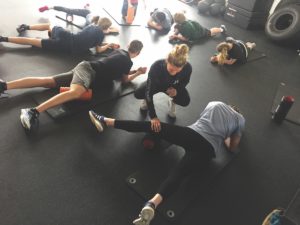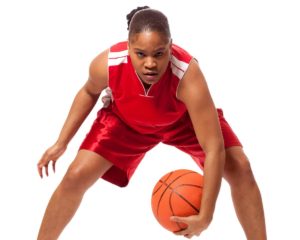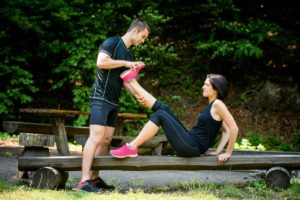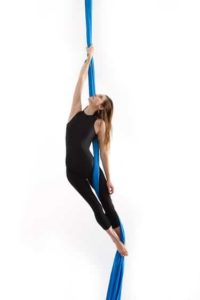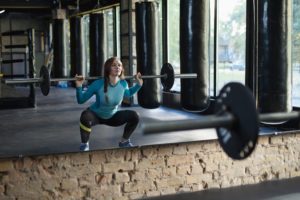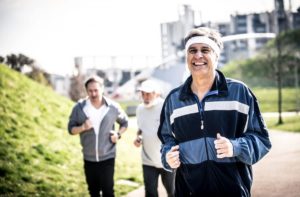Athletes
Tennis: Reduce Pain, Improve Performance
Tennis is one of the most popular sports in the world. In the U.S. alone, there are almost 18 million players, with another 14 million expressing interest (TIA 2018). Unfortunately, the dynamic, forceful twists and turns of the game pose ever-present injury risks to players (Roetert & Kovacs 2011).
If your fitness clientele includes people interested in playing this sport, you need to understand the causes of tennis-related injuries. This will help you develop strategies to improve movement function, reduce pain and keep clients on the court.
Sports Teams Go To Bat For Junk Food
Here is just one more reason why playing a sport is healthier than sitting on the couch watching a game. Researchers from NYU School of Medicine analyzed advertisements associated with the 10 professional sports organizations most popular among fans aged 2–17. Focusing on ads on TV, YouTube and team websites, the scientists set out to determine whether marketing was influencing the consumption of certain foods and nonalcoholic beverages.
A for Effort
client: Kent Denver School Students | personal trainer: Laura Bordeaux, strength and conditioning coach, Kent Denver School location: Englewood, Colorado
A complete course load. Think of it as core curriculum—literally. The Kent Denver School, a college-preparatory institution outside of Denver, offers a comprehensive educational experience that emphasizes both academics and sports. That’s where Laura Bordeaux comes in.
Soccer Is Medicine
Just in time for the World Cup™, researchers have found that football, or soccer as it’s known in the United States, is medicine. So go ahead and encourage clients to play it in their spare time! “Football is broad-spectrum medicine for patients with hypertension, type 2 diabetes and other lifestyle diseases,” according to Peter Krustrup, PhD, professor and head of the Sports and Health Sciences Research Unit at the University of Southern Denmark. Practicing soccer includes endurance training, high-intensity interval training and strength training, the scientists noted.
Strength Training May Increase Life Span
Here’s more motivation for clients to add strength exercises to their fitness programs: New research shows that strength training plays an important role in reducing risk of premature death from all causes and, specifically, from cancer—and when it comes to cancer, strength work may be even more beneficial to health than aerobic training.
Programming to Prevent ACL Injury
Your new client, 16-year-old Alexis, is a competitive athlete who wants you to design a fitness program that will help her prevent a second anterior cruciate ligament (ACL) tear. She partially tore her ACL while playing soccer and rehabbed it with a physical therapist, who cleared her to play again. Alexis returned to spring softball without an issue, but she would like to be as fully prepared as possible for the upcoming fall soccer season. She hopes to be recruited to play in college, but her parents are concerned she will sustain another ACL injury, perhaps a more severe one.
Female Athletes May Need to Pump Up the Protein
Female team athletes may need more protein for optimal recovery than previous research has suggested, according to a new study published in Medicine & Science in Sports & Exercise, the American College of Sports Medicine’s flagship journal. This study looked at six women engaging in variable-intensity intermittent exercise, the activity style common to most team sports.
The Achilles Tendon
Many fitness professionals have dealt with an Achilles tendon injury, either their own or a client’s. The largest and strongest tendon in the body, the Achilles connects the lower-leg muscles and calf to the heel. “Synchronous functioning” of the tendon and calf is crucial for many activities, including standing on tiptoe, running, jumping and climbing stairs (Bhimji 2016).
Dutch surgeon Philip Verheyen named the tendon (after the Greek hero Achilles) in 1693. Previously, it was known as “tendo magnus of Hippocrates” (van Dijk 2011).
How to Handle Exercise-Related Muscle Cramps
You’re running along your favorite path and then it happens: You get a cramp in your hamstring. While theories abound, there is limited consensus on why exercise-associated muscle cramps (EAMC) develop and how to get rid of them. A research review from the Brooks College of Health at the University of North Florida may clear up the confusion.
The review, published in Muscle & Nerve (2016; 54, 177–85), featured a series of studies analyzing the etiology and treatment of EAMC. Here’s what they learned:
Kids’ Injury Risk Is Higher in Particular Sports
Studies have shown that sport specialization can raise injury risk in school-age athletes. New research suggests that some sports may be more dangerous than others for kids who specialize.
Does Olympic Weightlifting Improve Muscle Power?
When it comes to improving jump and sprint performance, not all training programs are equal, says a study published in Medicine &s; Science in Sports &s; Exercise (2017; 49 [4], 736–45).
Creative Ideas That Inspire
Pyrolates™, performed on the Megaformer™, is offered at Firebrand™ Sports in Portland, Oregon. The class utilizes the Lagree Fitness method, which is founded on the idea that a workout doesn't need to be long to be effective. This experience aims to combine the flexibility, alignment and therapeutic benefits of Pilates and yoga; the intensity and strength training found in CrossFit®; and the cardio of running or cycling. This complete, full–body workout is low impact and minimizes wear and tear on the body.
Comparing Periodization Strategies for Women
Study reviewed: Bartolomei, S., et al. 2015. Block vs. weekly undulating periodized resistance training programs in women. Journal of Strength and Conditioning Research, 29 (10), 2679—87.
If your clientele includes women looking to boost their muscular strength within a specific time frame, creating periodized weight–training programs for them is a great idea. The question is: How should you structure the program? Bartolomei and colleagues' study published in 2015 offers guidance on two possibilities.
Jet Lag and Athletic Performance
Jet lag affects sports performance in very specific, context–dependent ways that can influence game outcomes, according to research from Northwestern University in Evanston, Illinois. The study reviewed data from over 40,000 Major League Baseball games over a 20–year period.
The Effects of Intensive Weight Loss on Female Physiology
Experts often raise concerns over intensive weight loss protocols. A recent study, published in Frontiers in Physiology (2017; https://doi.org/10.3389/fphys.2016.00689), sought to better understand the ramifications of rapid and significant weight loss in female participants. The research took place at the University of Jyväskylä in Finland.
Shoe Type Affects Running Speed
It’s logical to think heavier footwear can decrease movement economy and running time. The results of a new study get more specific.
Running Improves Brain Function in Young Runners
Looking to boost brain power? You may want to lace up those sneakers and head out for a long run, suggest researchers from the University of Arizona.
While there’s been plenty of study on exercise and brain function, these UA researchers wanted to know if a movement requiring little motor-control precision—like distance running—could affect neuroplasticity, the brain’s ability to form new neural connections. Most research to date has focused on older adults, but this study targeted younger minds.
Can Running Help Inflammation in Knee Joints?
Regular running is often associated with knee problems. However, there’s one condition that researchers now believe may improve with running: inflammation.
Walking Is Good for the Heart
Apples may keep the doctor away, but can we say the same for walking? With heart health, the answer could be yes, according to a study conducted by Binghampton University researchers and published in Creative Nursing (2016; 20 [4], 268–75).
Researchers Warn Seniors: Avoid High-Intensity Exercise
High-intensity exercise is all the rage these days. But for some—particularly, older adults—too much intensity may do more harm than good, warns a new study.
The study’s primary purpose was to understand the effects of various forms of leisure-time physical activity on the cardiovascular health and mortality rates of older adults. To determine these effects, researchers studied the records of 3,298 individuals. Their average age at enrollment was 69, and the median follow-up period was 17 years.


